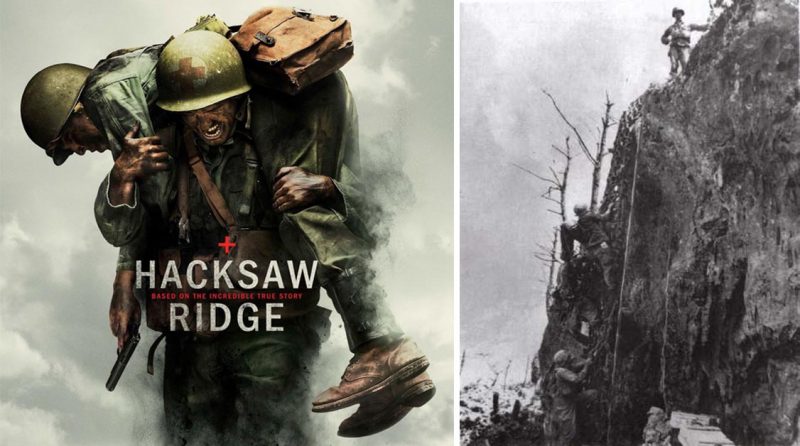Pacific War Veteran Elmer Hart doesn’t watch many movies. But he’s definitely going to see ‘Hacksaw Ridge’ starring Andrew Garfield and directed by Mel Gibson.
The movie tells the story of Army medic Desmond Doss, the only conscientious objector to earn a Medal of Honor for saving the lives of 75 soldiers during the Battle of Okinawa in World War Two. The Americans scaled a 400-foot high ridge. Many died as soon as they crested the top, killed by Japanese defenders with machine guns firing from tunnels.
Doss, a Seventh-day Adventist, drafted in 1942, never carried a rifle or killed an enemy. He was labeled a coward by fellow soldiers, assaulted, and arrested once, but when they reached the top of the ridge, he showed what he was made of. He braved heavy enemy shelling and machine-gun fire to save many lives over a number of days, carrying his wounded soldiers back to the ridge and lowering them down to safety. At incredible risk to himself, he made a massive contribution.
Elmer Hart, now aged 93, identifies with Doss. He, too, was a Seventh-day Adventist and an Army medic who never carried a rifle. He, too, was at Okinawa and would have been only a few miles from Doss when they landed on the beaches.
Hart was a 20-year-old student studying at an Adventist institution when in 1943 he was drafted.
Three months were spent in basic training in Arkansas at Camp Robinson, then off to San Francisco. The next stop was Hawaii and from there to battlefields on Pacific islands.
They landed on the beaches right after the infantry and sometimes with them, Hart said.
In one close encounter with the enemy, in their last assault on Saipan, he and other soldiers were surrounded by Japanese forces. An officer told them there was no way to rescue them, but they soldiers piled into a truck, and the driver was able to get them out of there, he told the Miami Herald.Following his Pacific tour, Hart returned to Fort Lewis, received an honorable discharge, and went back to college followed by studying medicine at Loma Linda University in California. He graduated in 1953.
Following his Pacific tour, Hart returned to Fort Lewis, received an honorable discharge, and went back to college followed by studying medicine at Loma Linda University in California.
He decided to see the film after his son, also a physician, told him about it. Hart is also curious about the movie’s accuracy.
